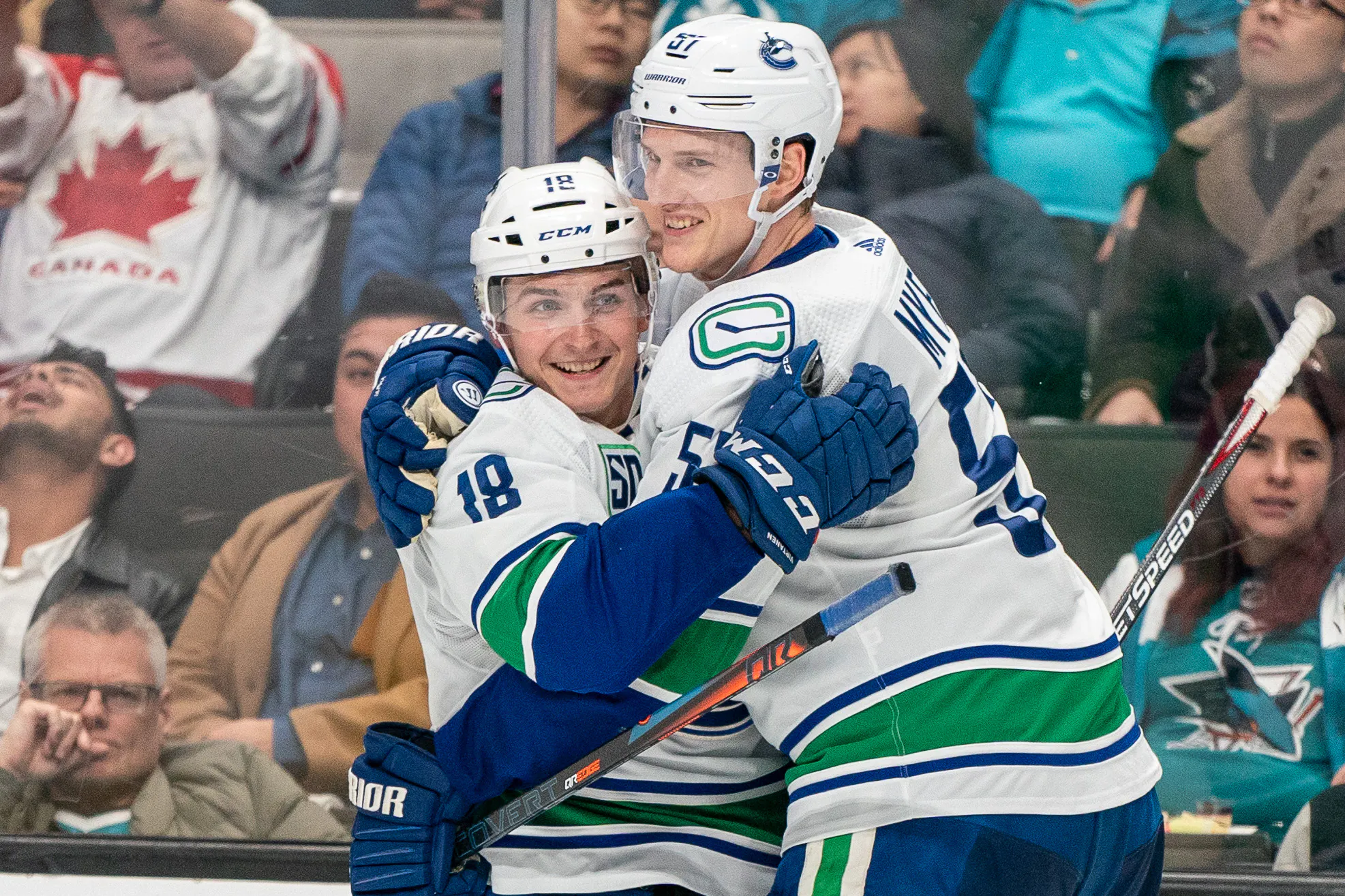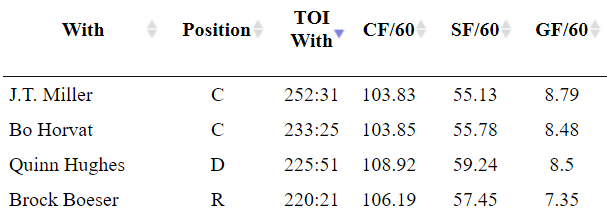Jake Virtanen drops Roman Josi
Nation Sites
The Nation Network
CanucksArmy has no direct affiliation to the Vancouver Canucks, Canucks Sports & Entertainment, NHL, or NHLPA
How the Canucks can get the best out of Jake Virtanen, by the numbers

Photo credit: © Neville E. Guard-USA TODAY Sports
The Vancouver Canucks signed Jake Virtanen to a two-year extension and must now decide where he is best used in the lineup.
He’s got speed, size and a strong wrist shot. His physical traits paint a picture of what looks to be an impactful winger who scores goals and deserved to be picked so high in his draft year. The problem has been that we have not seen those skills translate to results just yet. Sure, there are flashes of brilliance with Virtanen but not as many as some fans hoped there would be. Virtanen has had success alongside certain players and been able to be a strong contributor on the powerplay as well.
Let’s look into some of the best spots for Virtanen to play and how the Canucks can get the most out of the 24-year-old winger.
5-on-5
One of the downfalls to Virtanen’s game is his inability to drive play on his own. He needs to play with defensively responsible players who can also quickly transition into an aggressive counter-attack.

Let’s look at the most basic advanced stat first. Virtanen had a positive Corsi for percentage (CF%) with six players in which he played at least 20 minutes of 5-on-5 ice time in the 2019-20 season.
Virtanen had a positive goal share with four of the six players and a positive expected goal share with five of the six players.

A funny thing to note is that no goals were scored with Virtanen on the ice with Loui Eriksson in the 20:57 that they played together last season.
The best line for Virtanen last season was when he was alongside Pettersson and J.T. Miller. The trio had some high possession numbers, a positive goal share and their expected goal share was also very high.

Virtanen works with this line because Pettersson and Miller are both very dependable in their own end. They are also very good at making quick decisions on how to escape their own zone and transitioning quickly into a counter-attack.
Adding a player with Virtanen’s skills to the Pettersson-Miller duo makes it a different line. Virtanen isn’t great on the boards when it comes to retrieving the puck, and he doesn’t do a great job of cycling the puck, but can be physical at times on the forecheck.
Powerplay Strength
The second powerplay was very good for the Canucks this season. Virtanen was a big part of that, he averaged a shot attempt every 30 seconds while on the powerplay. Virtanen attempted five more shots per 60 minutes than Elias Pettersson did on the powerplay. Virtanen does a great job of getting the puck towards the net while on the powerplay.
Here’s how Virtanen on the second unit compared to Pettersson on the first unit.
Virtanen with powerplay two:

Pettersson with powerplay one:

The second powerplay unit was able to score at a very high rate this season. Many of their goals came off of quick rushes into the zone by Tyler Myers, Adam Gaudette or Virtanen.
Virtanen had six powerplay goals this past season and is an effective piece on the second unit that can be used in different spots on the man-advantage unit.
Contract
The contract came in at two years with an average annual value of $2.55 million.
It’s a fair deal for a player like Virtanen who will be given a chance to work his way onto the Canucks’ top line this season.
Virtanen recently spoke with the media and is training with new dad of the team, Tyler Myers. Myers has a home gym and Virtanen claims he has been over there every day working out and is able to get some ice in Kelowna alongside Myers. There’s a ton of former and current NHL players living in Kelowna right now. There are also a lot of cabins on the lake. Since the bubble, Virtanen has been relatively quiet. He looks lean and hopefully this is the year we see him come into camp looking to prove that he truly is a top six player.
It would sure be fun to talk positively about Jake Virtanen at a training camp for once.
Breaking News
- Wagner’s Weekly: Why are the Canucks scratching Nils Höglander?
- When Rick Tocchet announced he was leaving: Top 10 Canucks stories of 2025 – #4
- The Statsies: Elias Pettersson returns, leads Canucks in xGF% in loss to Sharks
- The Stanchies: Conor Garland makes it interesting, but Canucks fall 6-3 to Sharks
- World Juniors: Canucks’ Cootes and Team Canada avoid upset loss, Sansonnens scores for Switzerland
